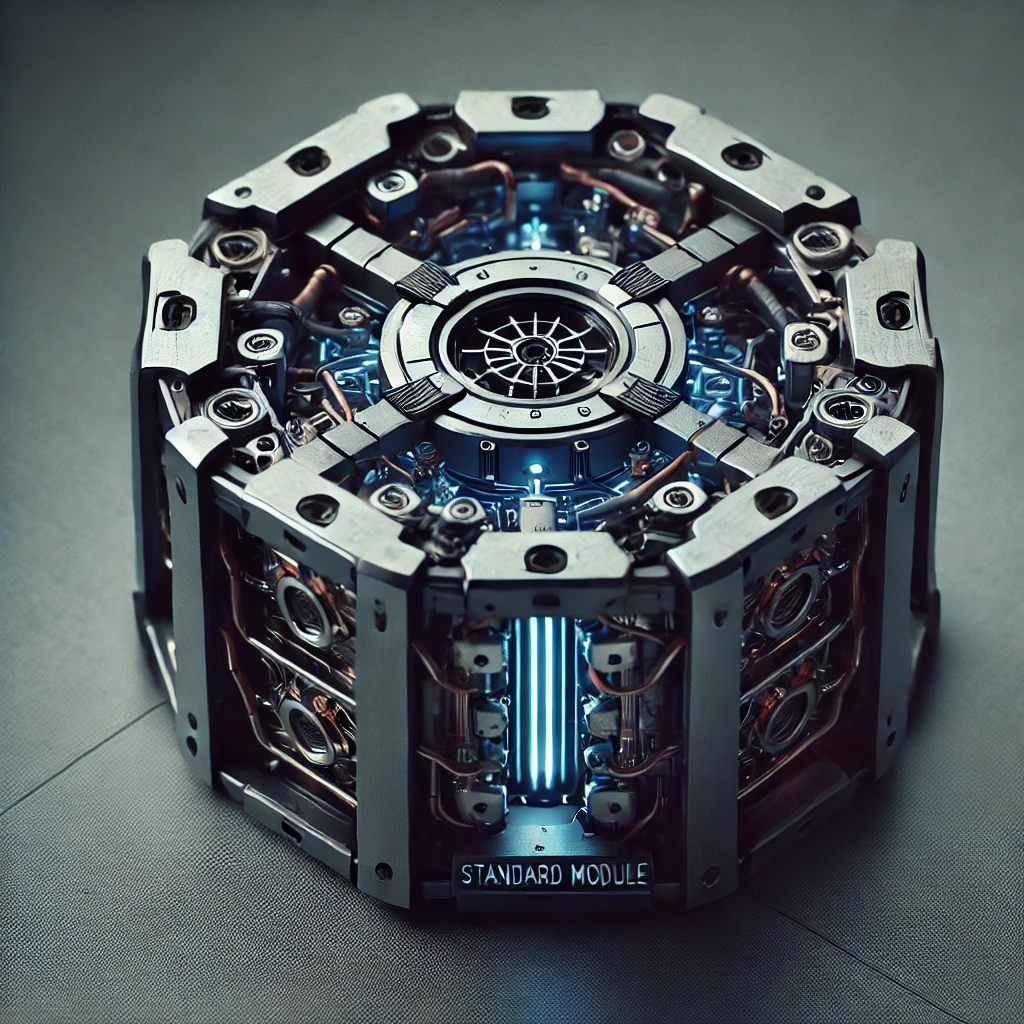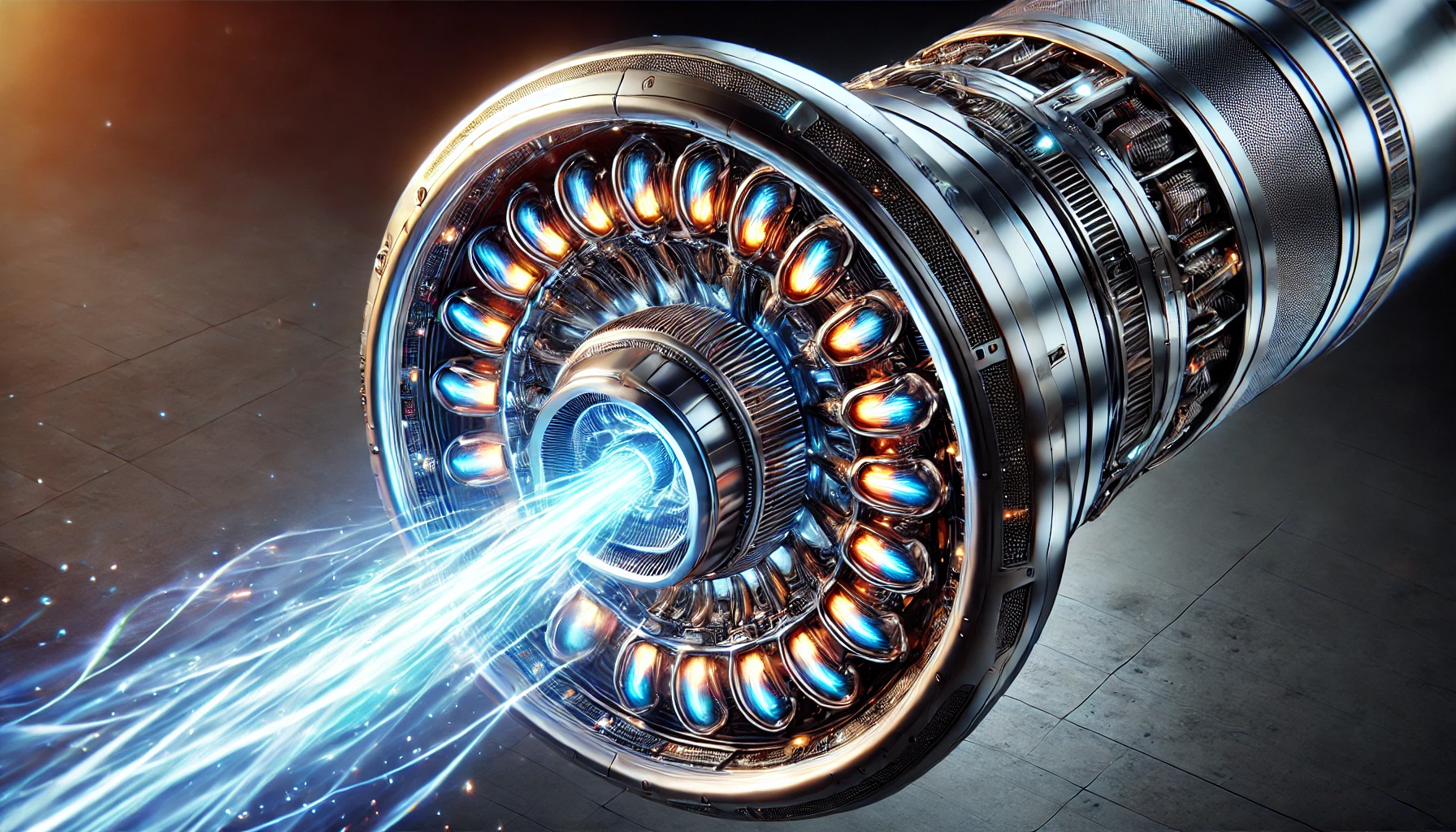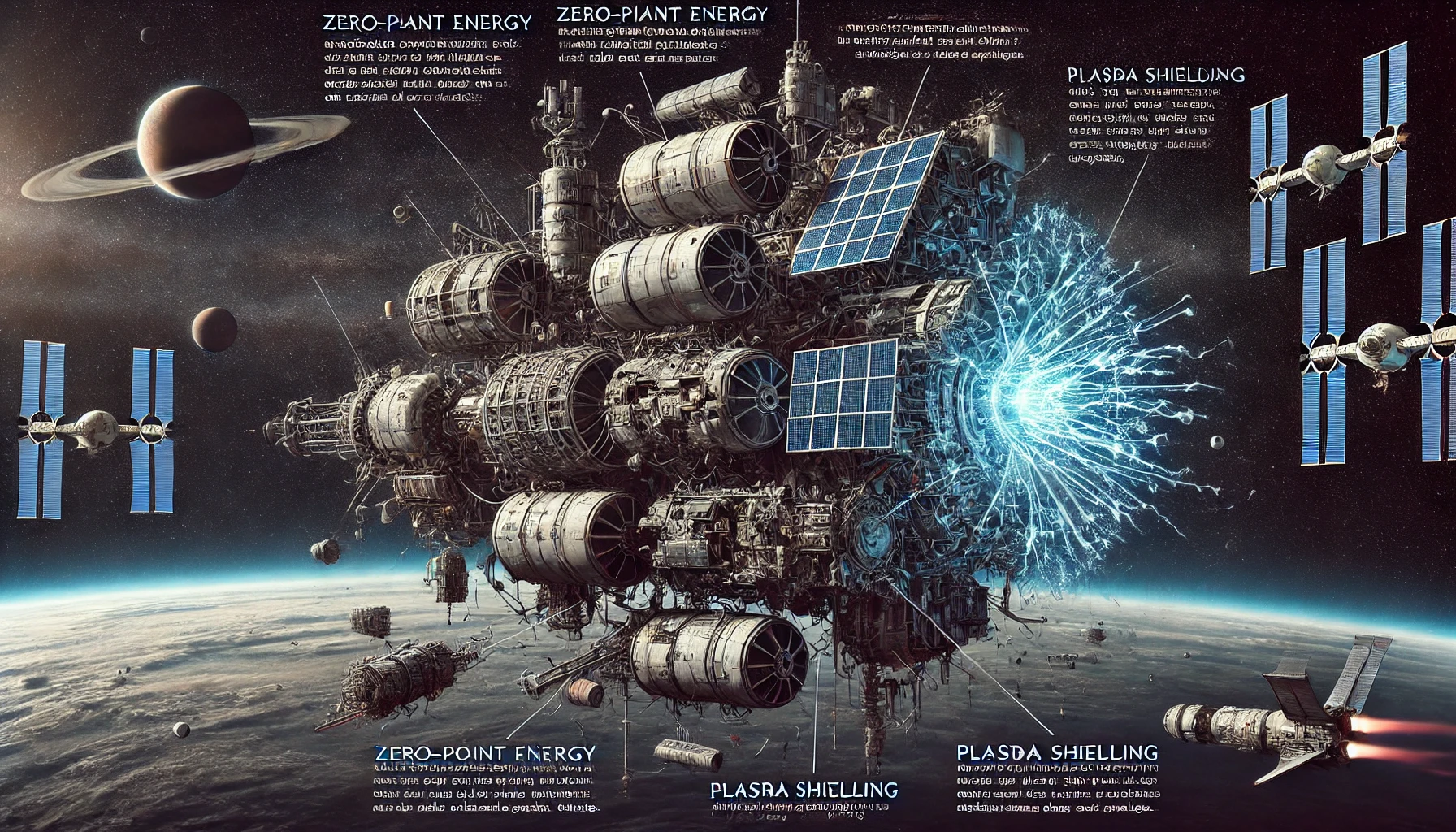“Harnessing the Quantum Vacuum for Interstellar Travel”
Zero-Point Energy (ZPE) Converters are the revolutionary technology that powers the advanced spacecraft of “The Lunar Syndicate,” enabling humanity’s expansion beyond Earth. These devices tap into the quantum vacuum, extracting energy from the fluctuations of spacetime itself, providing a virtually limitless source of power for propulsion and onboard systems.
Functionality and Principles
- Quantum Fluctuation Extraction: ZPE Converters operate by creating a localized distortion of spacetime at the quantum level. This distortion allows them to interact with virtual particles that constantly pop in and out of existence in the quantum vacuum. The process can be conceptualized using a fictionalized equation:
ΔE = ħΔf(SpD)- Where:
ΔEis the change in energy extractedħis a modified Planck constant representing the efficiency of spacetime distortionΔfis the fluctuation frequency within the quantum vacuumSpDis the Spacetime Distortion factor applied by the converter
- Where:
- Energy Conversion: The converters then capture and convert the energy released by these virtual particles into usable electrical energy. The exact mechanism by which this conversion occurs is a closely guarded secret, but it is believed to involve a combination of advanced quantum manipulation and controlled micro-singularities. This conversion can be represented by:
P = η(ΔE/Δt)- Where:
Pis the power outputηis the energy conversion efficiency (approaching 1 in ideal conditions)Δtis the time interval over which the energy is extracted
- Where:
- Decentralized Power: ZPE Converters are designed to be modular and scalable, allowing for decentralized power generation within spacecraft. This eliminates the need for bulky fuel tanks and complex fuel delivery systems, maximizing cargo capacity and enabling independent space travel.
Form Factor and Integration in Spacecraft
- Modular Design: ZPE Converters are manufactured in standardized module sizes for easy integration into spacecraft design.
- Propulsion Modules: These are high-output ZPE Converters specifically designed to power Electromagnetic Thrusters. They are often integrated directly into the thruster housing or located in close proximity to minimize energy loss.
- Auxiliary Modules: Smaller ZPE Converters provide power for onboard systems, including life support, communications, sensors, and other essential functions. These modules can be distributed throughout the spacecraft to provide localized power or connected to a central power grid.
- Connection to Electromagnetic Thrusters:
- Direct Coupling: Propulsion Modules are often directly coupled to Electromagnetic Thrusters, with high-capacity energy conduits transferring the generated power to the thruster’s electromagnetic coils. This direct coupling ensures maximum efficiency and responsiveness of the propulsion system. The power transfer can be modeled as:
Pₜ = P(1 - Rloss)- Where:
Pₜis the power transferred to the thrusterPis the power output of the Propulsion ModuleRlossrepresents energy losses in the conductive cables (approaching 0 in advanced systems)
- Where:
- Inductive Transfer: In some spacecraft designs, energy may be transferred wirelessly from Propulsion Modules to Electromagnetic Thrusters via inductive transfer. This allows for greater flexibility in spacecraft design and facilitates modularity and ease of maintenance. The efficiency of inductive transfer can be represented by:
ηᵢ = (M²k²)/((L₁L₂)+(M²k²))- Where:
ηᵢis the inductive transfer efficiencyMis the mutual inductance between the ZPE Converter and the thruster coilskis the coupling coefficientL₁andL₂are the self-inductances of the ZPE Converter and the thruster coils, respectively
- Where:
- Direct Coupling: Propulsion Modules are often directly coupled to Electromagnetic Thrusters, with high-capacity energy conduits transferring the generated power to the thruster’s electromagnetic coils. This direct coupling ensures maximum efficiency and responsiveness of the propulsion system. The power transfer can be modeled as:
- Energy Distribution Network: Spacecraft utilize advanced energy distribution networks to manage and distribute ZPE-generated power. These networks incorporate:
- High-Capacity Conductors: Superconducting cables or advanced conductive materials minimize energy loss during transmission.
- Smart Power Management Systems: AI-driven systems monitor power consumption and optimize energy distribution to various spacecraft systems.
- Emergency Reserves: Backup ZPE Converters or high-density energy cells provide redundant power in case of primary system failure.
Specifications (Spacecraft Application)
- Propulsion Module Output: Propulsion Modules designed for large spacecraft can generate terawatts (TW) to petawatts (PW) of power, sufficient to power high-thrust Electromagnetic Thrusters for rapid acceleration and interstellar travel. Smaller spacecraft utilize Propulsion Modules with gigawatt (GW) output.
- Auxiliary Module Output: Auxiliary Modules typically generate gigawatts (GW) of power, providing ample energy for onboard systems.
- Energy Density: ZPE Converters used in spacecraft possess extremely high energy density, allowing for extended operation without refueling. A single Propulsion Module can power a spacecraft for decades or even centuries.
- Efficiency: ZPE Converters powering spacecraft are designed for maximum efficiency to optimize thrust and minimize energy waste. Advanced heat management systems are crucial to dissipate excess heat generated during high-power operation.
- Safety: Spacecraft incorporate multiple safety systems to prevent uncontrolled energy release or spacetime distortions. These systems include:
- Containment Fields: Localized energy containment fields surround ZPE Converters to prevent accidental energy leakage.
- Emergency Shutdown Protocols: Automated and manual shutdown protocols can quickly disable ZPE Converters in case of malfunction.
- Redundant Systems: Spacecraft are equipped with redundant power systems to ensure continued operation in case of ZPE Converter failure.


